Back in time, the thicker end of something was sometimes called its butt end. The butt of a long gun and pork shoulder butt are modern day examples. The picnic portion of a pork shoulder tapers into the front leg.
I like pork shoulder butts and cannot lie. They are highly versatile for producing a multitude of high protein sausage items, or in the making of several different shredded/pulled-pork entrees. Further, butts are easy enough to work with to sell as a retail cut; yet are intimidating to enough people to keep their price comparatively low (supply & demand). Many barbecuer’s ideal way of boning a pork shoulder butt is to pull out a clean blade bone after many hours of labor-intensive smoke-cooking. However, it only takes a sharp boning knife and some raw bone removal practice in order to open up a multitude of economical, delicious and nutritious pork shoulder butt based eating possibilities. Another factor affecting butt price is the ongoing 60 or so year convenience food trend; so a lot of people today barley prepare any food at all. Gordon Food Service offers boneless butts to the public at a competitive price, but one has to buy at least a two-pack that weighs nearly 20 pounds. I have found it easier to keep bone-fragments out of end-products when using boneless butts as my starting raw meat. I believe workers at pork plants “shotgun” out the blade bones using knives; then the remaining attached lean is later mechanically separated. Pork lean contains more niacin then beef and pork fat is currently being hailed by many chefs as something close to the 8th wonder of the world.

Bone-in pork shoulder butts were recently on sale here at $1.29 per pound and I saw on Facebook yesterday where Illinois Kroger stores were using them as loss-leaders (to get people into the store) at 99 cents per pound.
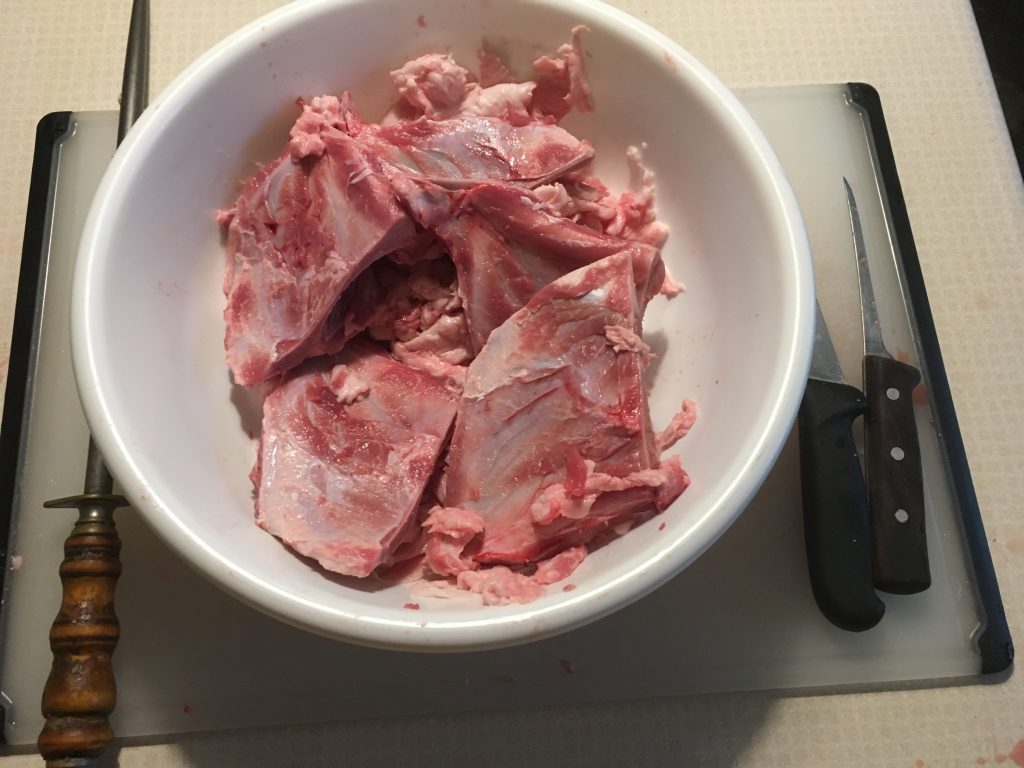
After removing 4.25 pounds of bone, thick fat and other objectionable material from 34.59 pounds of 5 bone-in butts, the price of boneless , “clean” pork calculated to be $1.47 per pound.
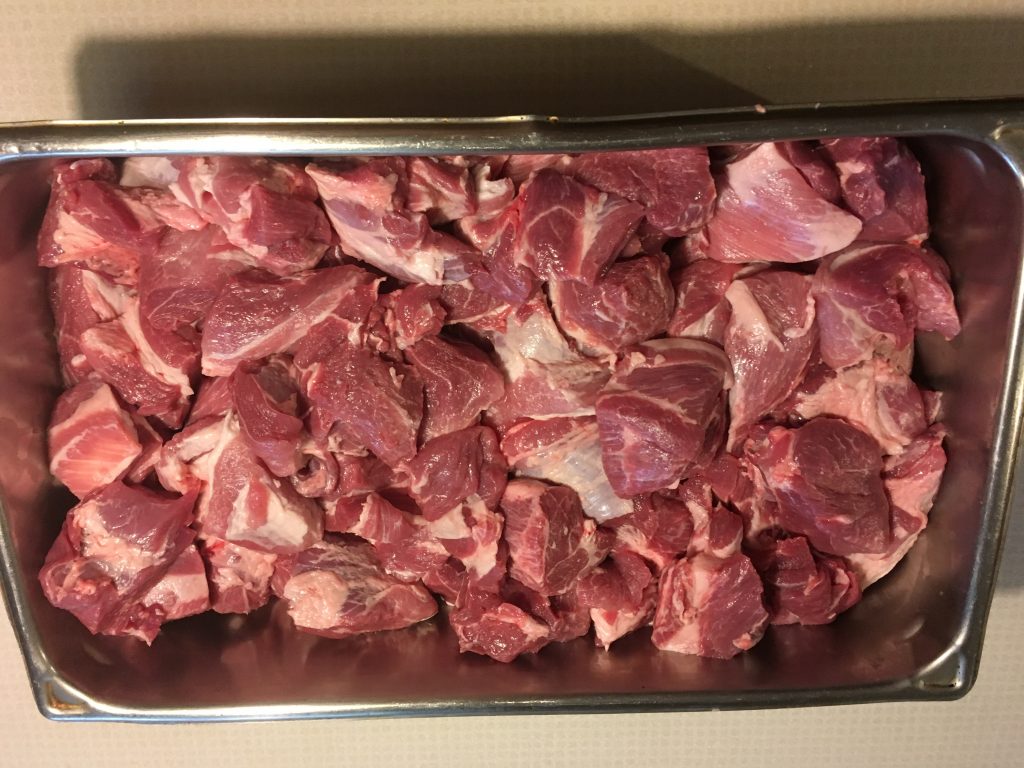
The total weight of chunked pork was then used to adjust non-meat ingredient amounts from a 65 pound fresh Polish sausage master batch. However, unsweetened apple juice was added for the marinate. (Click Here) to see how such adjustments are made.
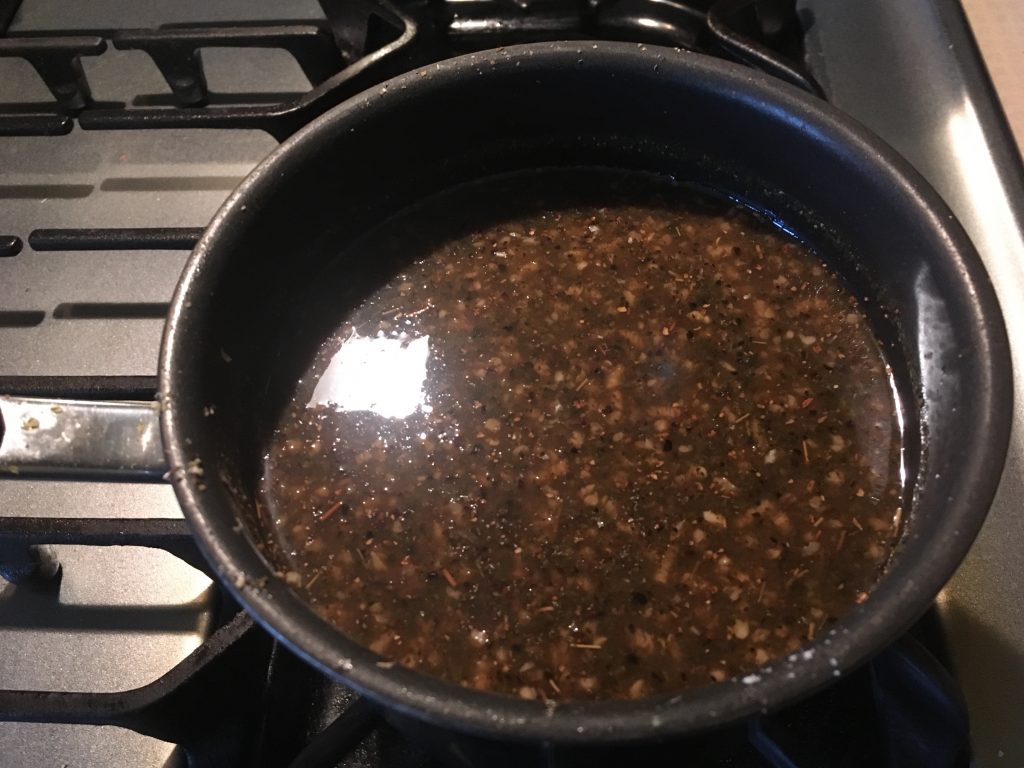
Leaf marjoram, black pepper, crushed garlic and unsweetened apple juice were brought to a slow boil for about 5 minutes. That practice pasteurizes dry spices, takes the edge off garlic (causes less burping) and blends flavors into a tea-like mixture. Salt was then stirred in and the seasoning blend chilled.
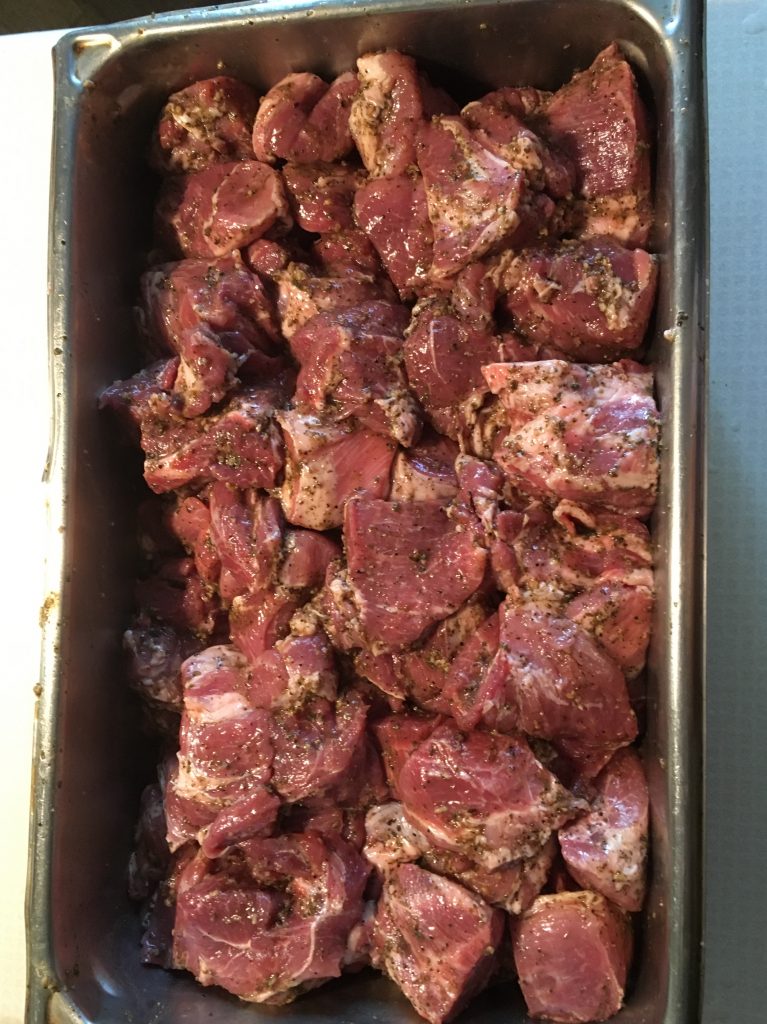
Roast sodium phosphate (I buy Amesphos), as opposed to a sausage blend, was dissolved in a small amount of water and lightly mixed in with pork chunks. Immediately after that the chilled seasoning blend was mixed in well. I marinate for about a 1 and a half and remix the meat a few times during that time period. That aids in uniform marination and helps extract some salt-soluble protein. Some of the extracted protein later forms a desirable smoked protein skin on the meat exterior of smoke-cooked chubs. I’m an advocate of either pumping soluble additives into large meat cuts or marinating fairly small pieces of meat. Those practices quickly get added ingredients in direct contact with all the meat; where it can react with it as intended.
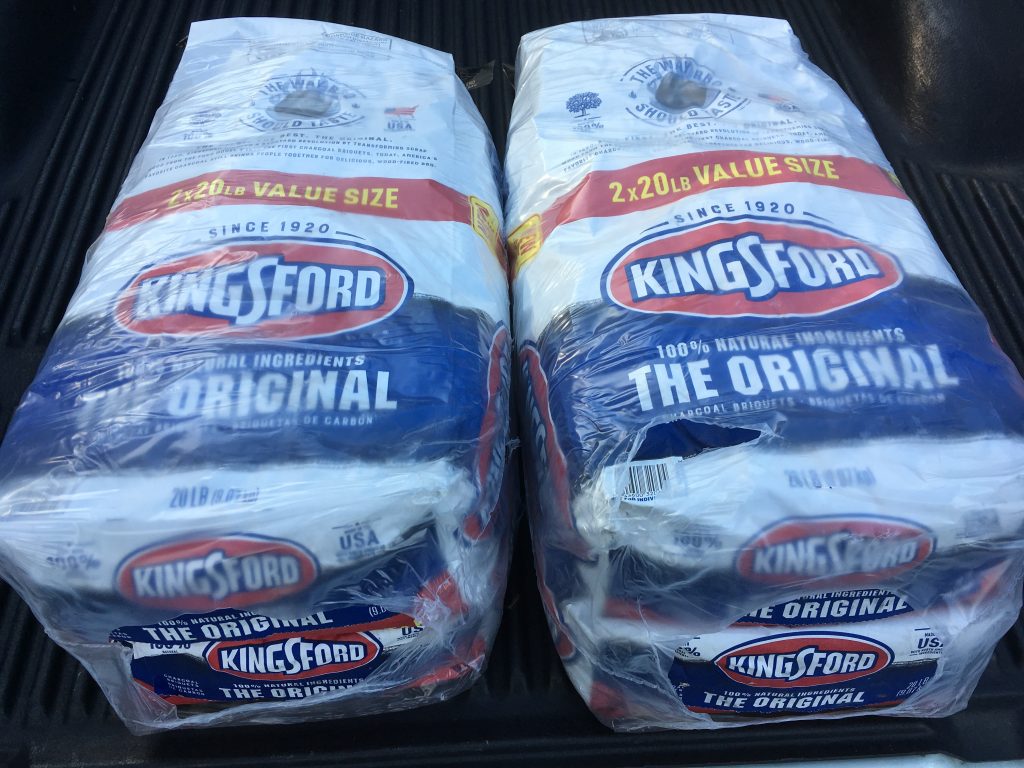
While the meat marinates I start getting things together for a smoke-cook. Here are 4 twenty pound bags of charcoal briquettes that my local big-box home improvement store had on sale for Labor Day. I payed $7 per bag and these 4 bags should last me until around next Labor Day.

Here, the drum-smoker is set up and chunks of hardwood are freshly split. All we really need to do outdoors is get a desired smoke level and some adequate heat on the product. So, there’s no need for expensive smoke-cooking units or to not finish the cook in a residential oven.
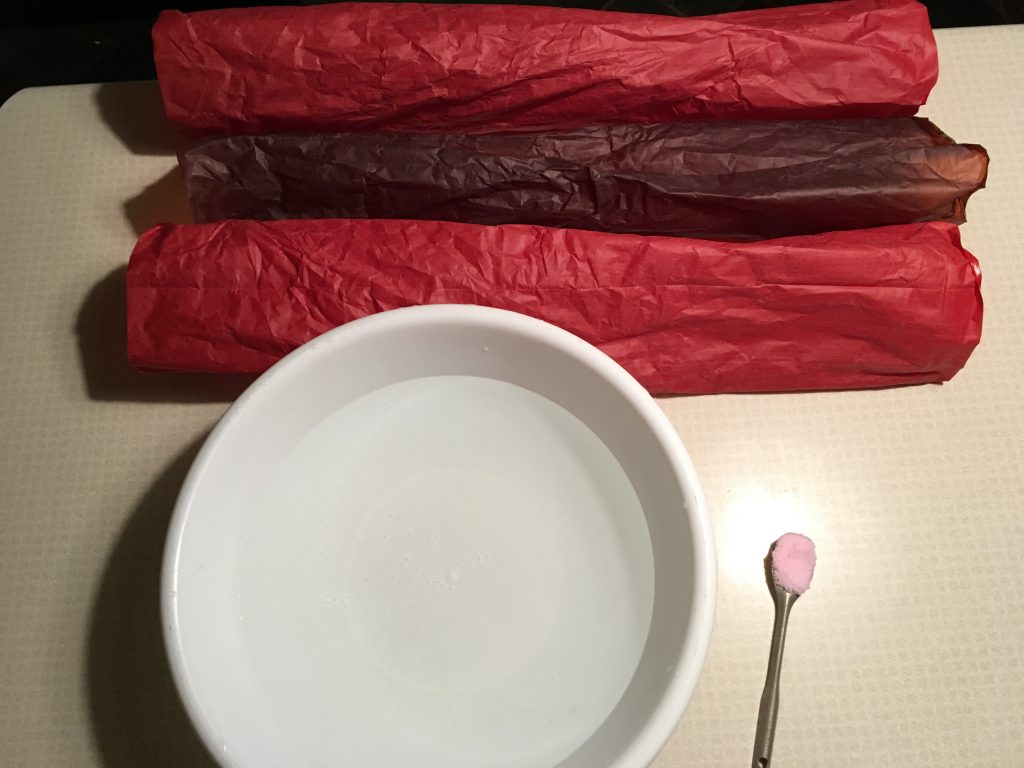
On the morning of the cook, one teaspoon of cure was added to warm water. Next, the large fibrous casing were turned inside out and soaked for about 1/2 hour. The cure is to help obtain some faux smoke-ring development on the meat that contacts the casings.
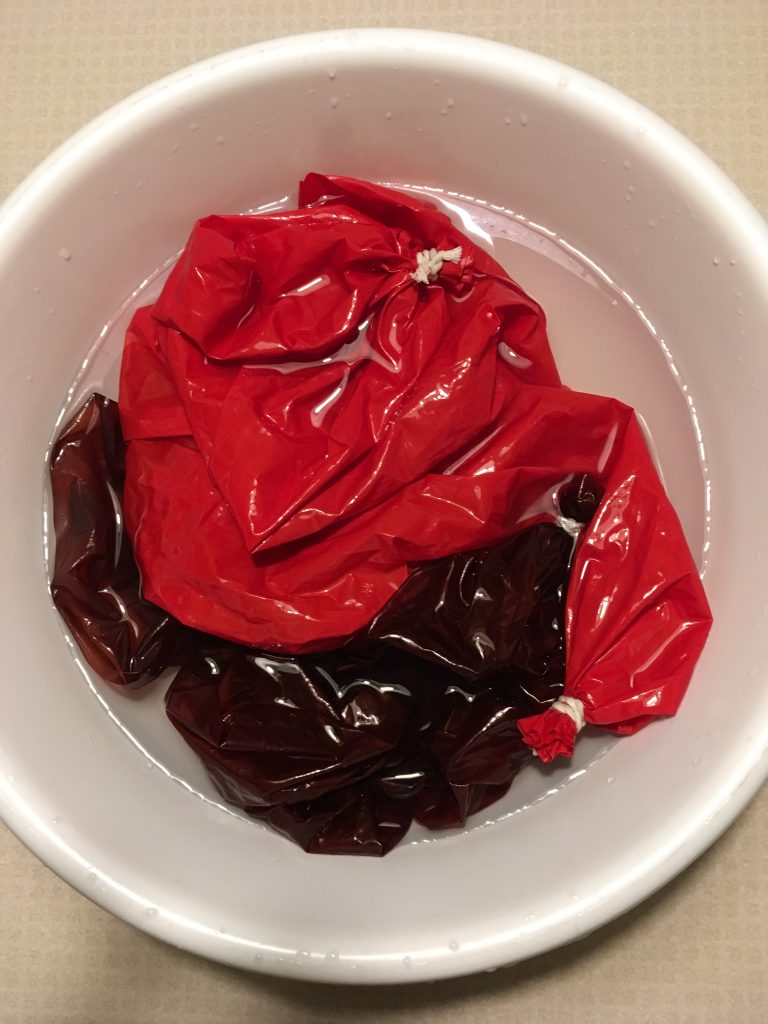
The casings are turned right-side-out and the one of the ends are tied with cotton butcher’s twine; to ready them for stuffing.
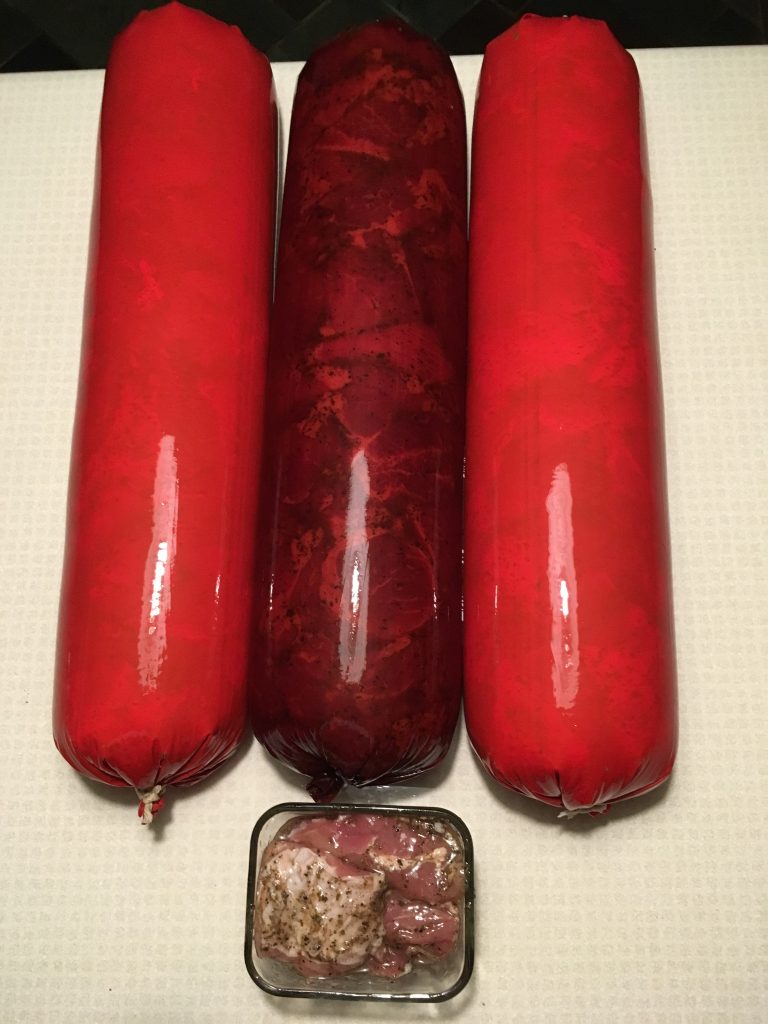
After hand-stuffing (fisting) all that I could into the 3 casings, there were 3 chunks left. Those 3 chunks were placed in a glass cooking dish, covered tightly with foil and placed in the refrigerator while the rest of the meat was in the smoke-cooker.
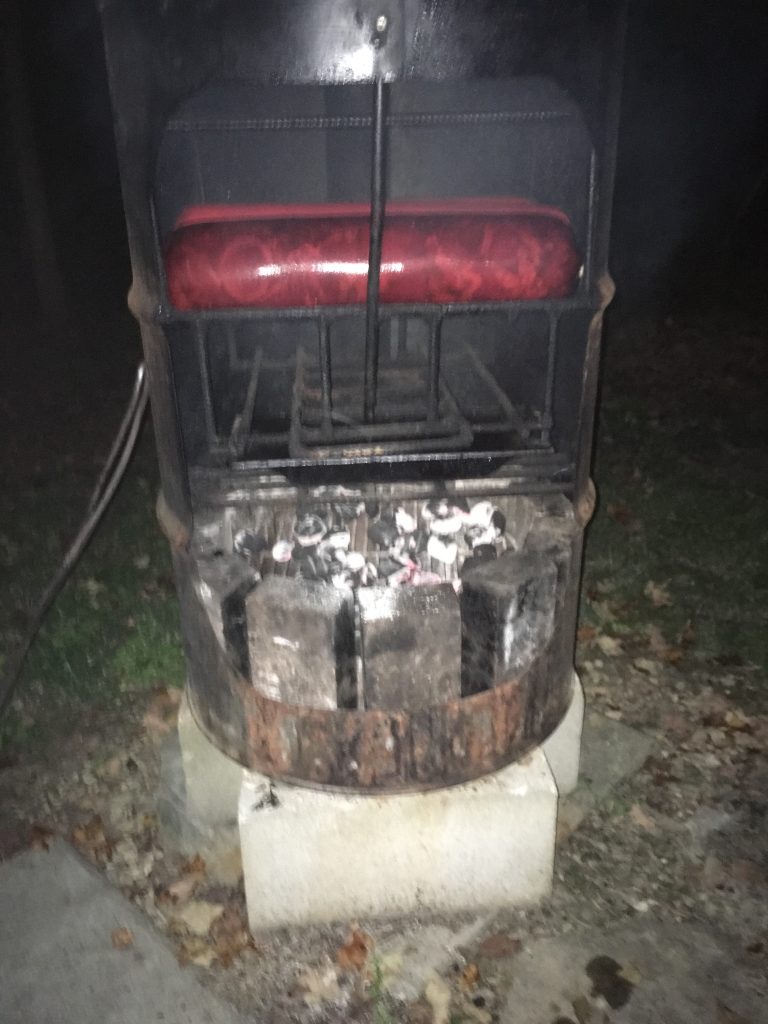
Two charcoal chimneys full of partially lit briquettes were added onto the fire-grate; one after the other.
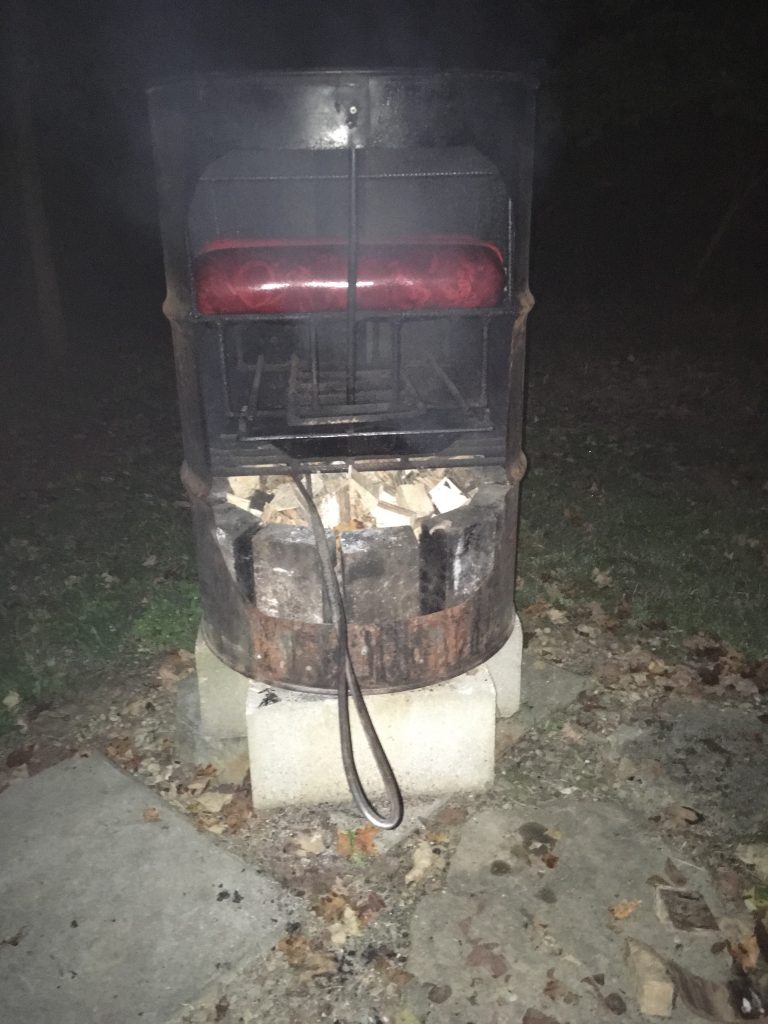
Hardwood chunks go on top of the partially lit briquettes and then the cookers shroud is put in place.
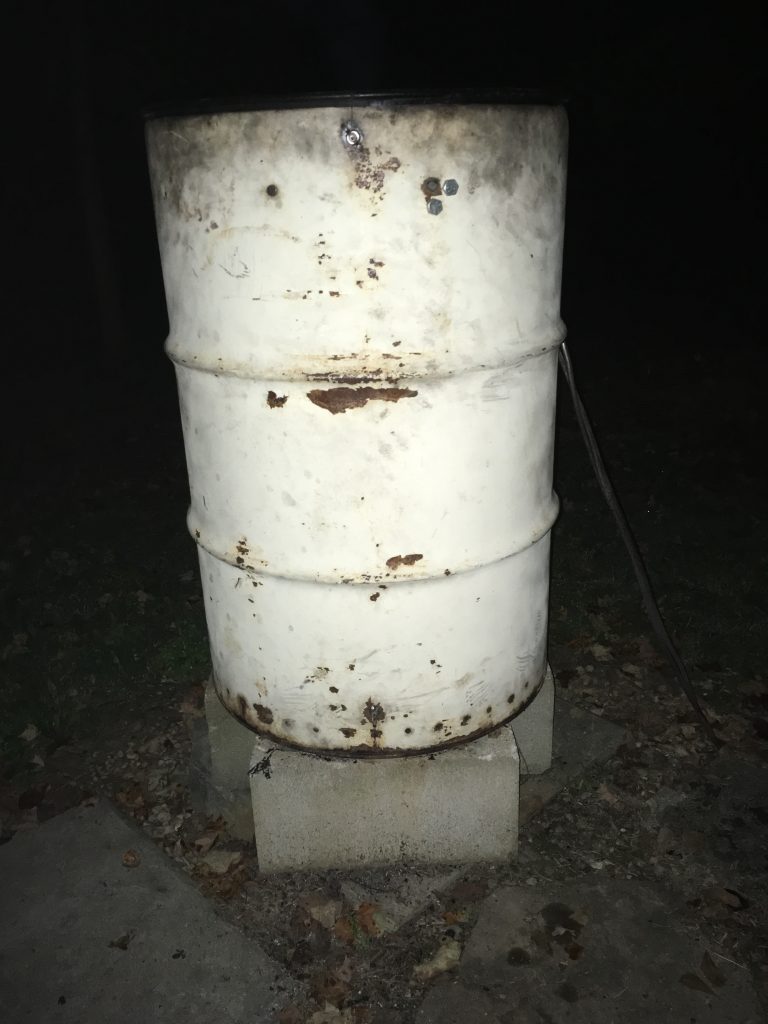
Shroud is in place and things are starting to smoke & heat up.
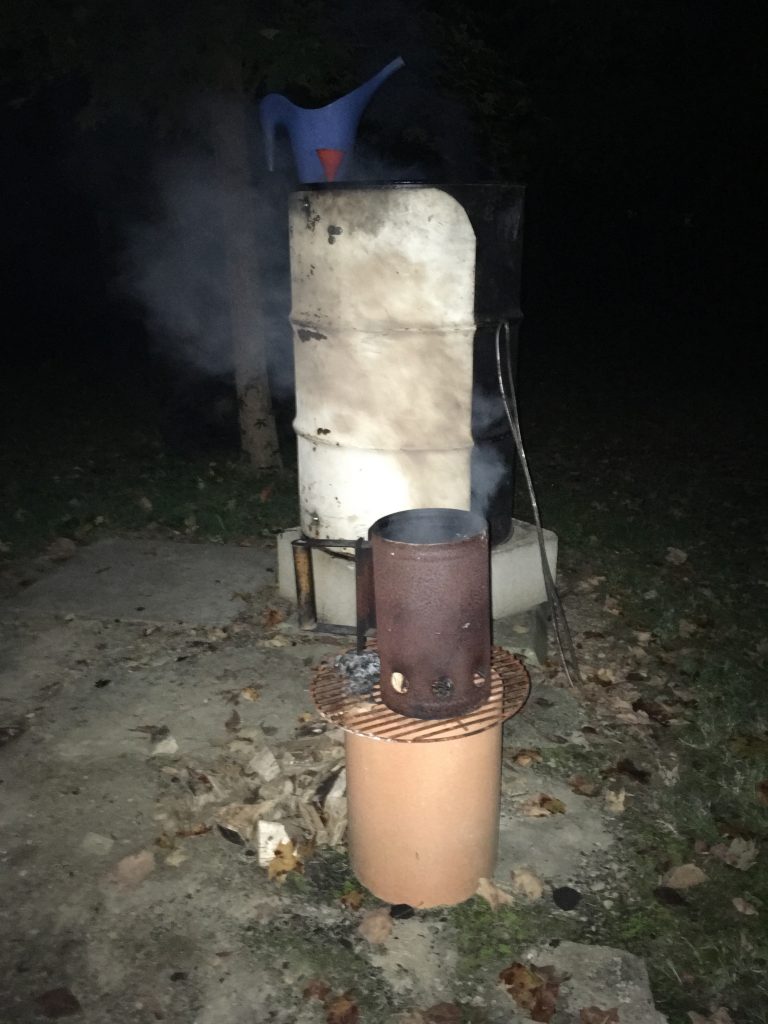
Three hours after start up the cooking chamber of the smoke-cooker drops to about 220F. At that time the cast iron water boil-off pan is refilled and 2/3 of a partially lit charcoal chimney is added to the fire grate. Both water and fuel are added without opening the smoke-cooker.
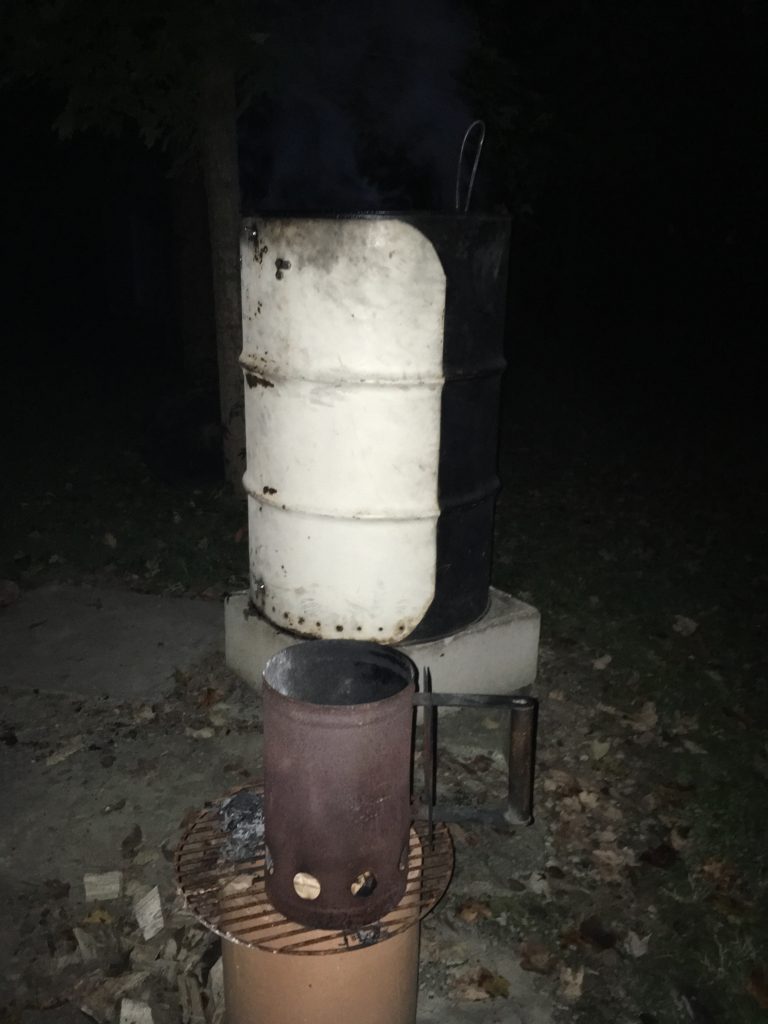
After 2 more hours, more water and fuel are added in the same fashion as before.
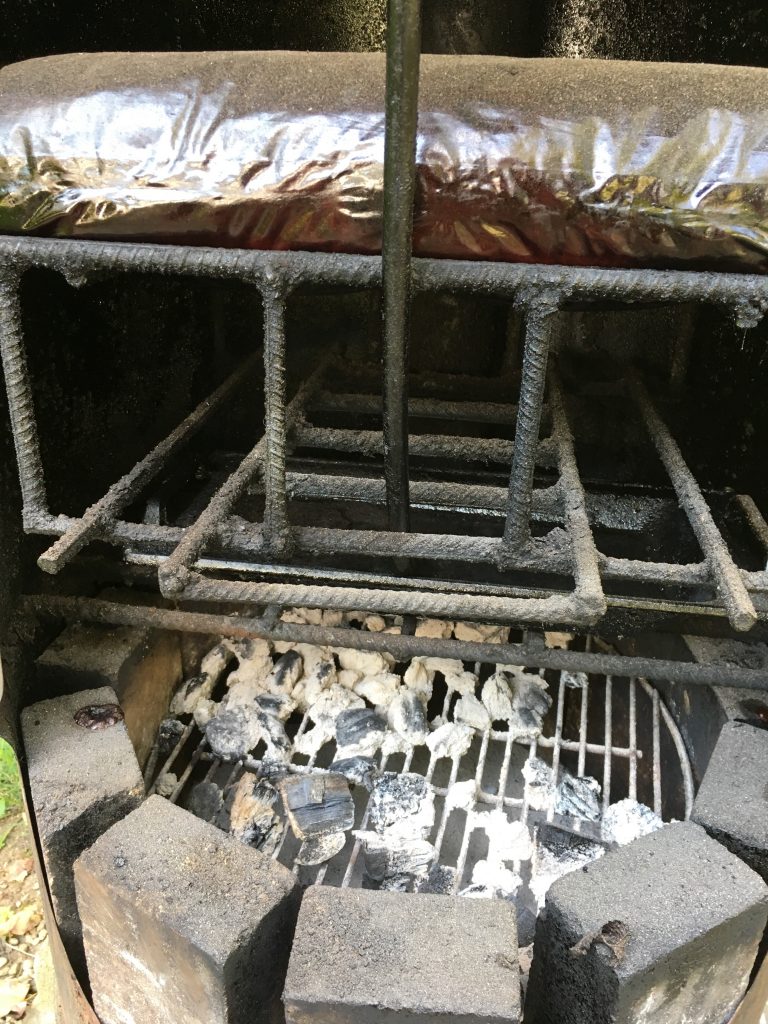
The shroud was removed after 7 to 8 hours of smoke-cooking. Notice how fibrous casings kept fly-ash off the meat. And, I presume the semi-permeable casings filtered out some of the heavier components of hardwood smoke.
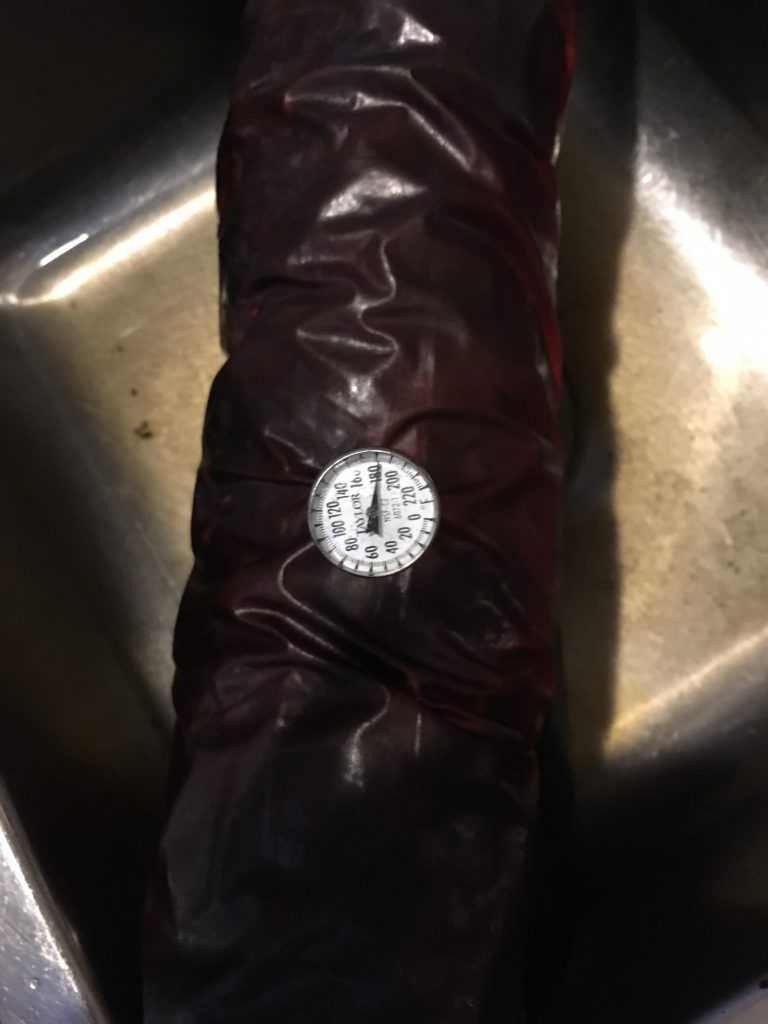
This pic was taken just prior to rinsing off and striping off the casings.
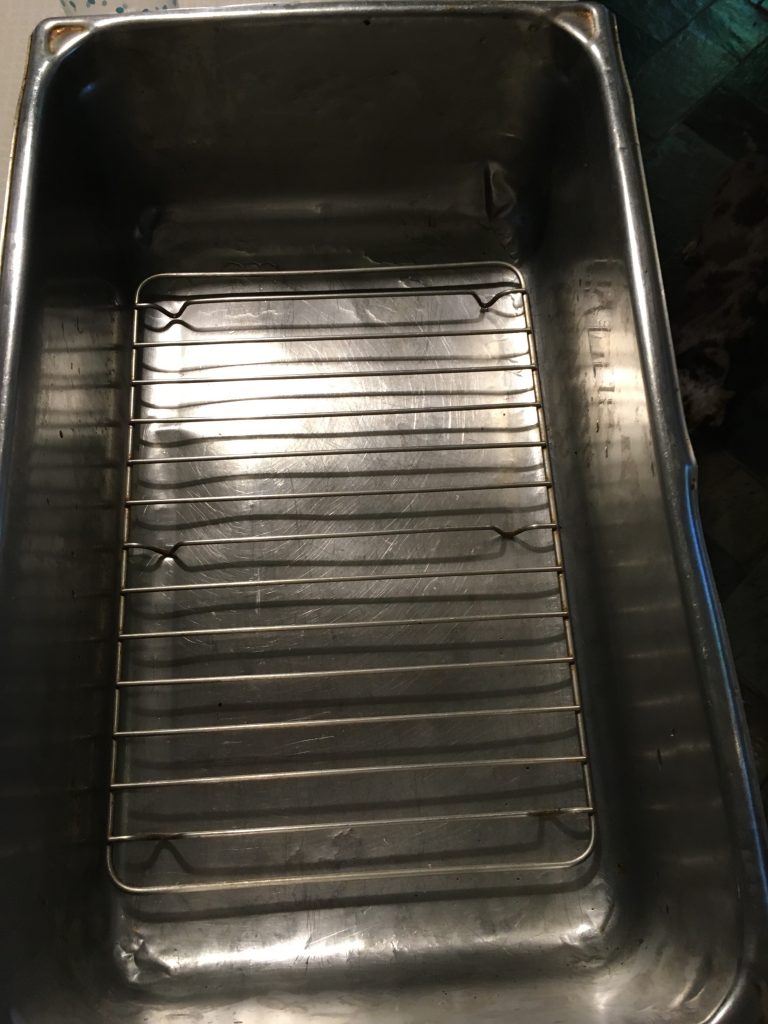
A rack was placed in the bottom of a deep steam-table pan to help keep pork up out of cooking purge; while it was being steam-cooked up to 200F. Cooking in liquid washes out too much water soluble meat protein, vitamins and minerals.
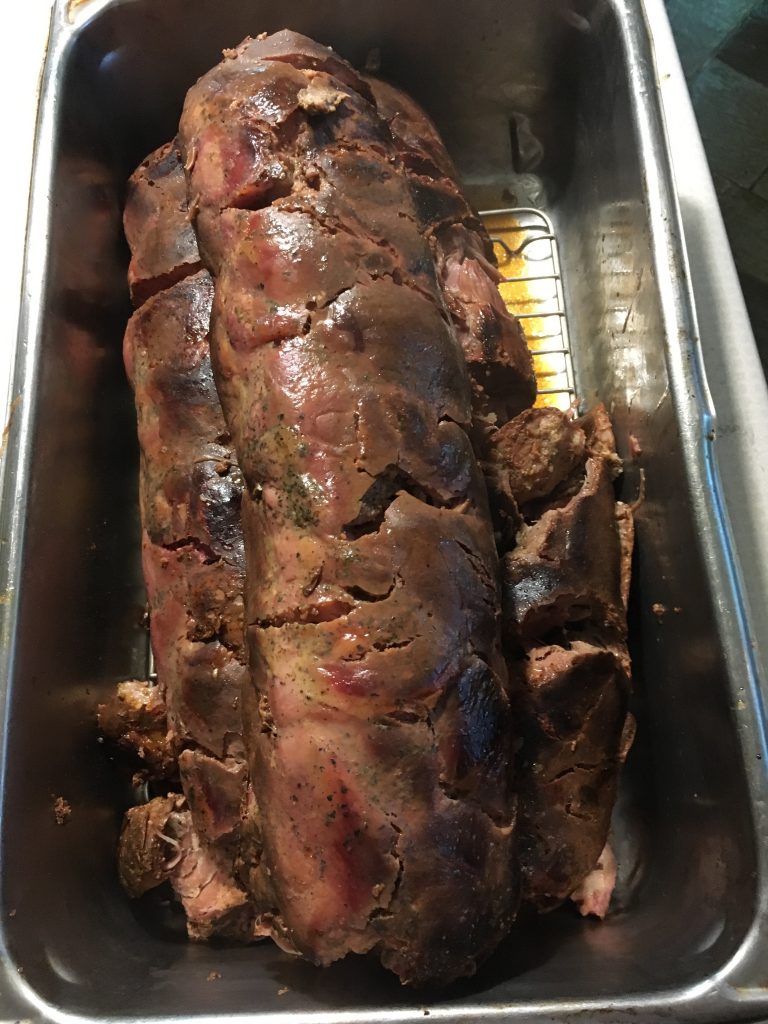
Striped chubs. You can see how the extracted salt-soluble protein formed a weak bind between the chunks of pork.
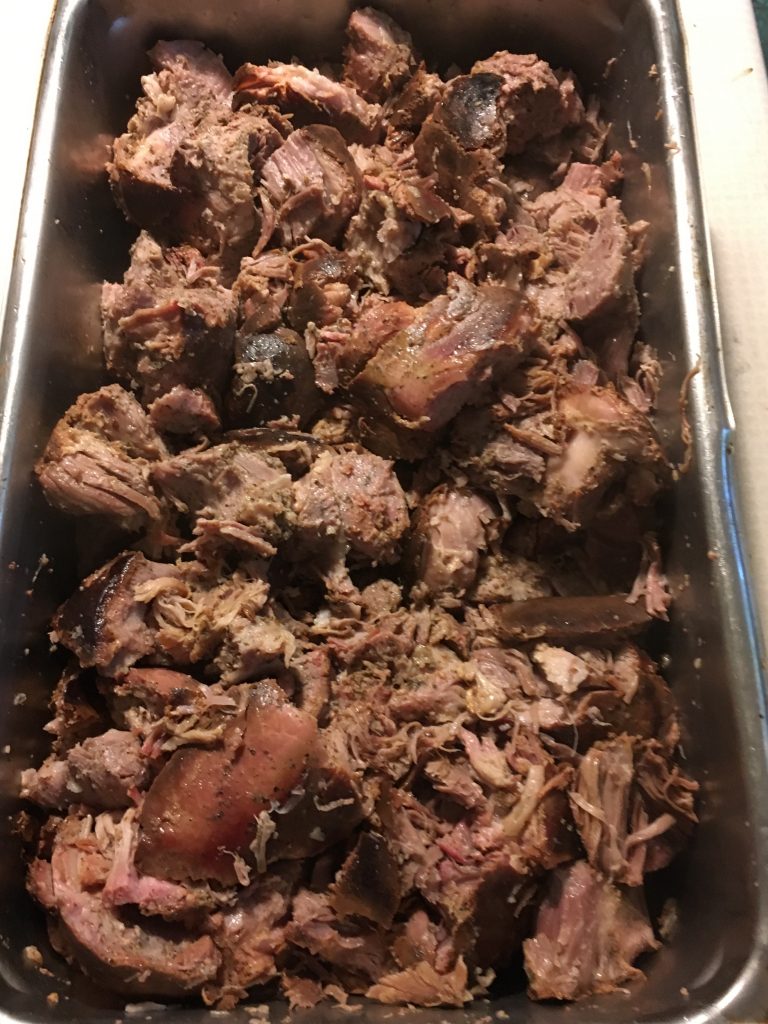
Chubs pulled apart using “bear claws” and pork ready to finish steam-cooking.

Deep steam-table pan tightly covered with foil.
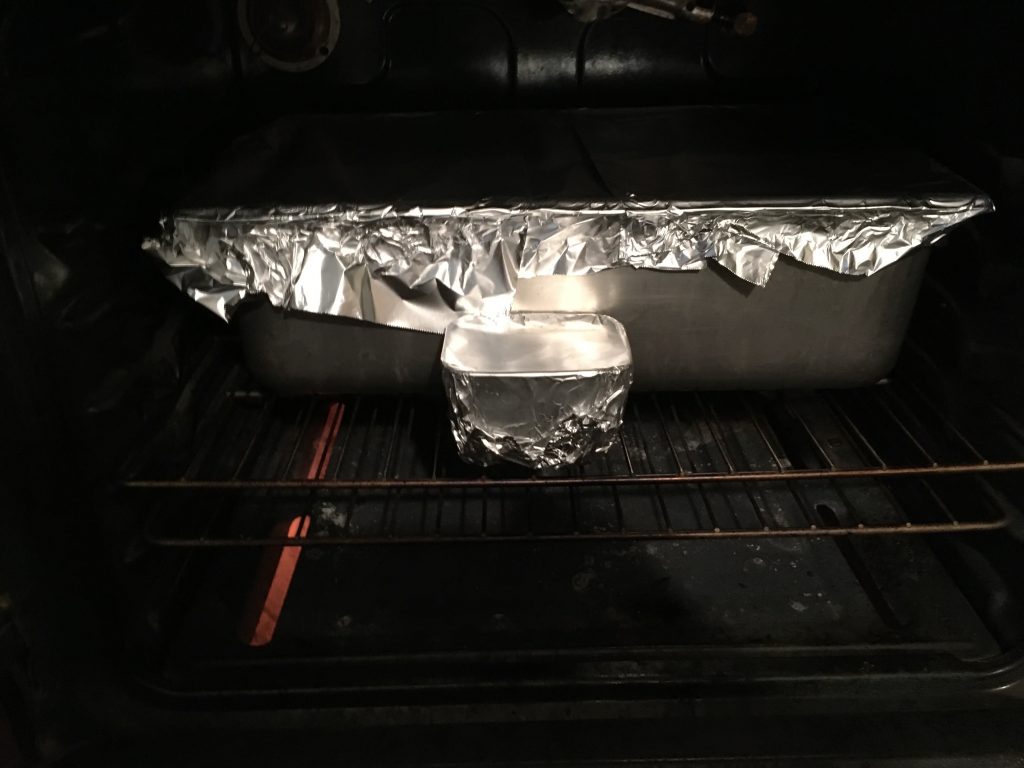
Big smoke-cooked pan and small raw dish both into a 250F oven for 2 hours.
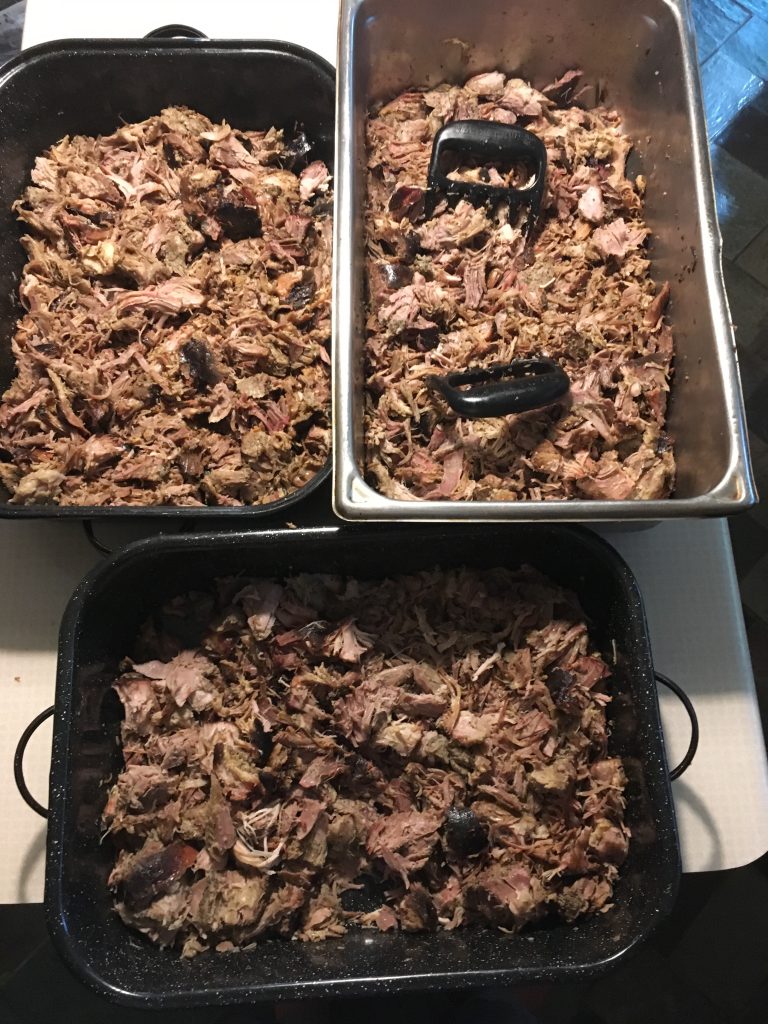
Meat in small dish pulled kinda hard, it was mixed in with everything else. Meat was spread into 3 containers so that it would quickly cool enough for pulling and excess fat removal.
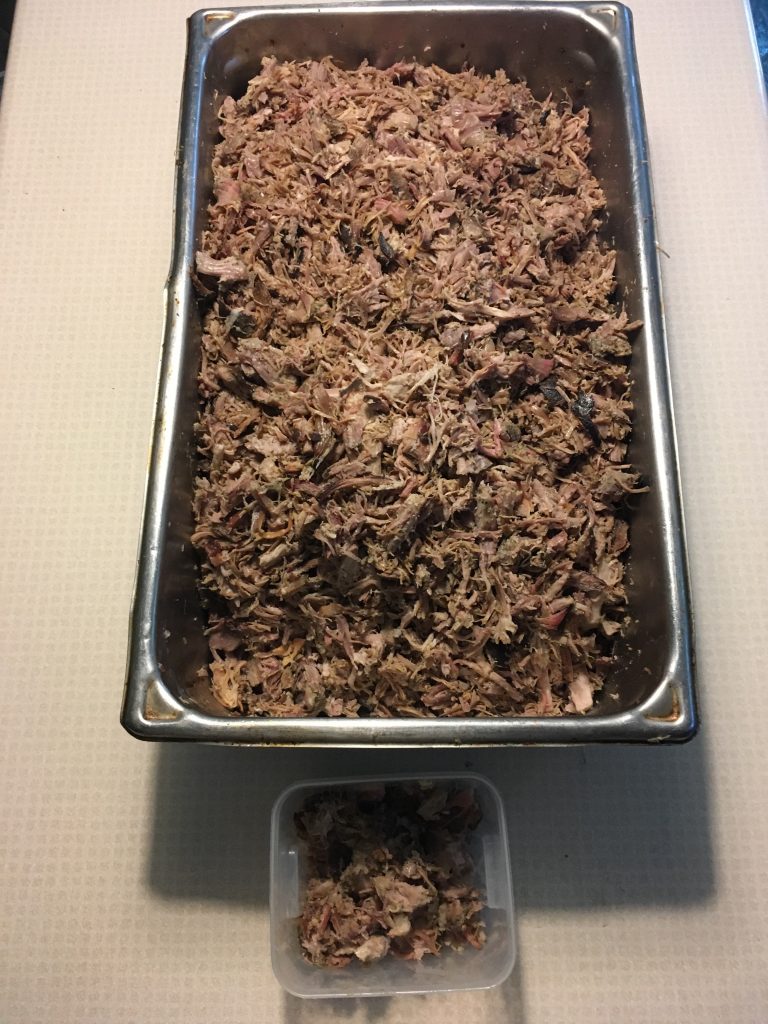
Finished product in the big pan. Removed fat globs in the small container.
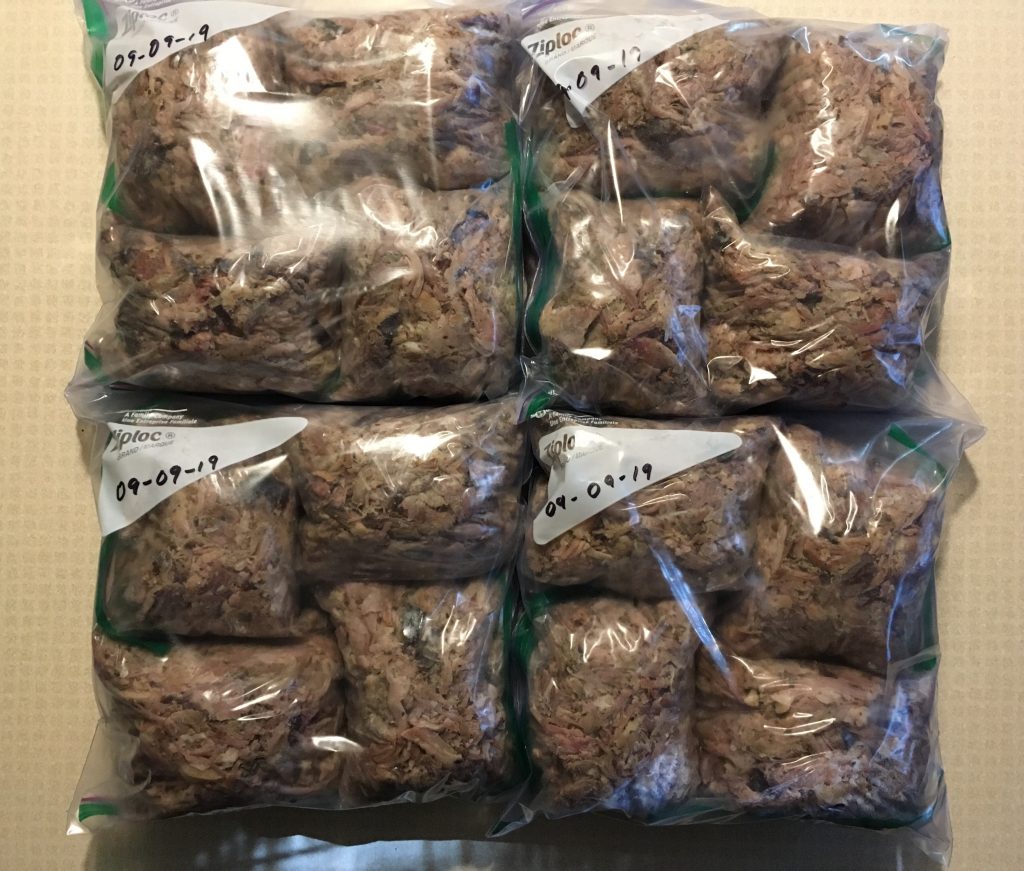
Pulled-pork was hand pressed into sandwich size bags while it was still somewhat warm and flexible. That practice makes for a tighter (less oxygen) pack. Gallon bags were used to achieve an adequate double wrap.
Spread packages out in the freezer so they freeze rapidly. Hold below 0F. Use with BBQ sauce, as Chipotle style fixings or in any other way that you can imagine. This economical, delicious product can even be used in Goetta production.
While this process does take a good bit of time, actual labor outputs are low. You just have to be near by to periodically tend to things. And, I have smoked 60 pounds at a time on several occasions. The 3 chubs on the bottom rack (closer to the heat source) finish in the oven while the top rack chubs continue in the smoke-cooker.
Bottom line: For about $2 a pound, out-of-pocket, one can have a high quality convenience meat product that normally sells for around 5 times that amount of money.
